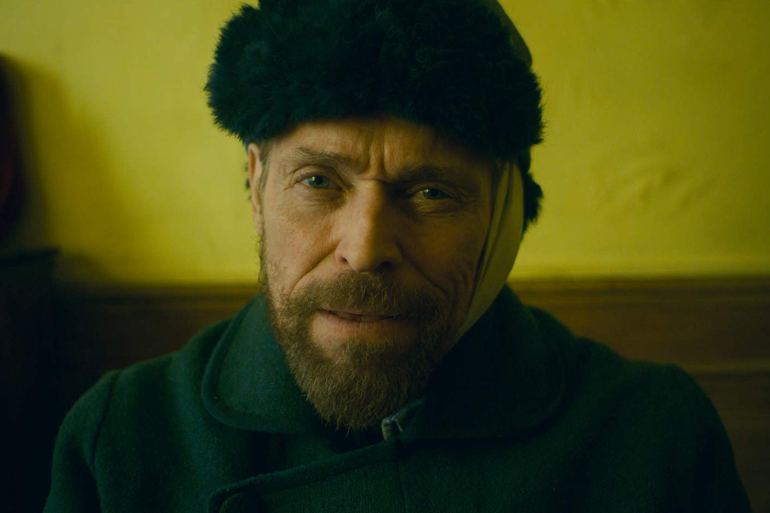At Eternity’s Gate, directed by Julian Schnabel, stands as one of the quiet masterpieces of 2018. Willem Dafoe stars as Vincent Van Gogh in an Oscar nominated career best, and truly embraces the life and visions of the troubled artist. Its stunning visuals and cinematography provide a fresh perspective on the classic biopic, feeling less like a definitive timeline of Van Gogh’s life and more of an intimate journey into his mental state during his final days. While there are moments where the style of the film can feel jarring or unsettling, it is incredibly effective in portraying the life Van Gogh lived and the ways in which he viewed the world.
The film takes place over the last two years of Van Gogh’s life, particularly at the height of his creative genius. Despite his efforts, Van Gogh fails to gain popularity in Paris, where he resides with his brother and closest companion, Theo (Rupert Friend). Soon after he is berated to remove his paintings from a cafe, he meets fellow artist Paul Gauguin (Oscar Isaac), who encourages him to move to Arles, France, to live a more creative life. Van Gogh decides to follow this advice and experiences a sudden artistic breakthrough, creating as many as 75 paintings in 80 days.
Van Gogh often escapes into nature to paint in beautiful scenes interwoven with the more linear biographical storyline. These scenes are some of the most visually stunning aspects of the film. They emphasize the beauty of nature with handheld camerawork and a stirring score. These pivotal moments strive to make the viewer see the world as the artist did, doing well to capture the complex visions of Van Gogh. The edges of the frames are often blurry and out of focus as though we are looking through the eyes of the artist himself. While this approach by cinematographer Benoît Delhomme may be off-putting to a casual audience, it does quite well at creating a deep connection with Van Gogh’s powerful creativity.
While his brother is in Arles, Theo convinces Gauguin to visit Vincent, hoping to assuage some of his brother’s loneliness. The two live together in the famous Yellow House for some time, but Gauguin is critical of Van Gogh’s style and techniques, and they frequently get into debates about their own art, as well as other artists. Although they fought, Van Gogh still desperately relies on his company, and when Gauguin informs him that he is leaving, it triggers one of several breakdowns that ultimately leave Van Gogh in a mental institution after cutting off his ear. The two never saw each other again, but corresponded via letters intermittently.
Following this, Van Gogh’s life consists of hospitals, breakdowns, and bouts of delusional paranoia. Schnabel takes some liberties in the actual facts and history of Van Gogh’s life and death, preferring to focus on the artist rather than the historical figure. The film focuses more on the creative processes that an artist undergoes, and delves into Van Gogh’s mental health struggles and how they informed his work. It is clear that Schnabel approached his telling of Van Gogh’s story with immense care and respect.
The unconventional take on the biopic, along with Schnabel’s personal approach and style may not work for some. However, it feels incredibly unique in its intimacies with the mind of its subject, a closeness that is not often found in historical films. It is quietly heart-wrenching in its depiction of Vincent’s loneliness and the solace he found in nature. Although one could argue that it romanticizes the struggle of mental illness in favor of portraying a tortured artist, it nevertheless feels emotionally honest in its depiction of Van Gogh’s troubled, yet brilliant mind. And, perhaps most importantly, it is truly and deeply reflective of the lasting effect of Van Gogh’s artistic creations.
★★★★
To help us continue to create content, please consider supporting us on Patreon


